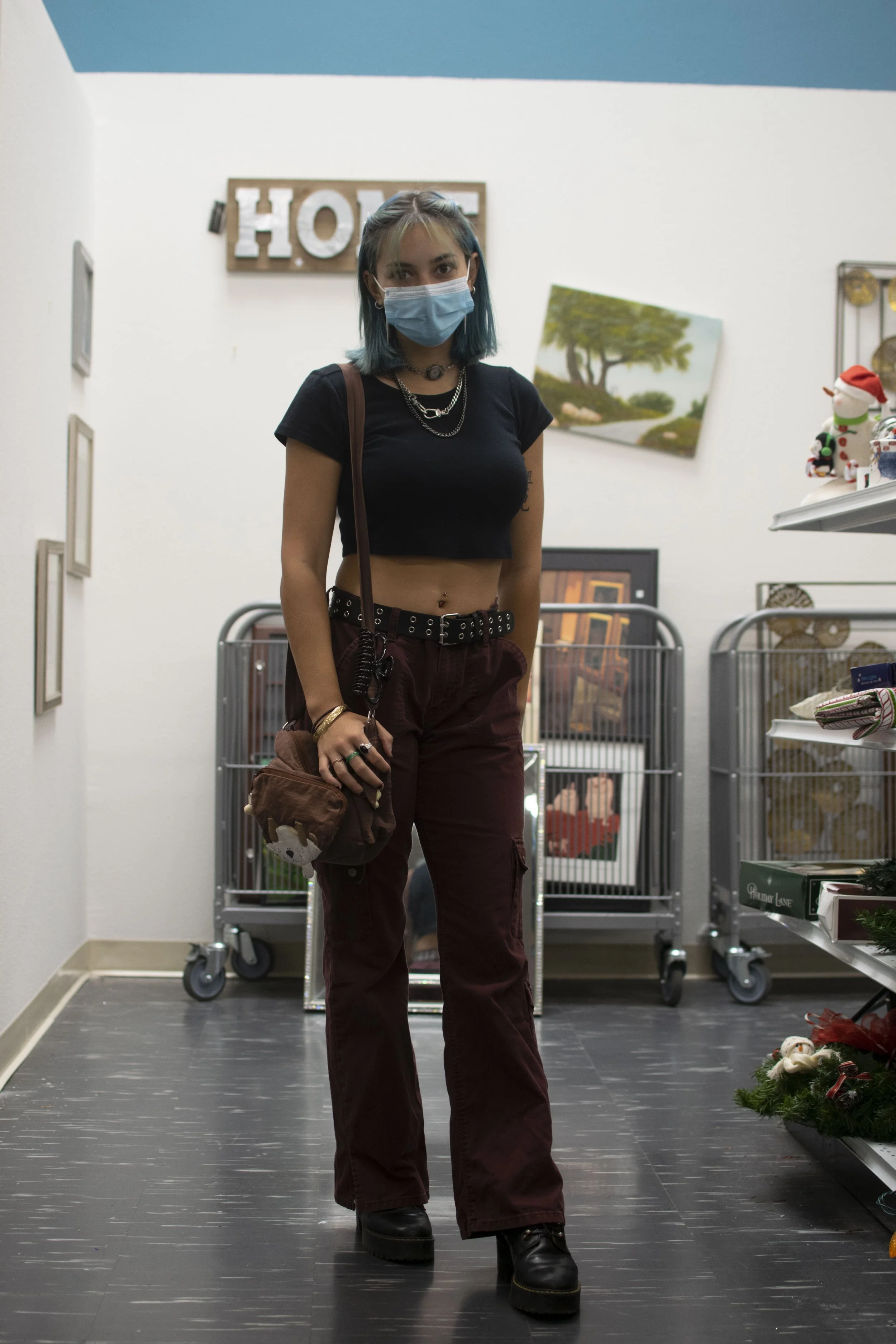The Portland Issue
The Berkeley Connection
Something borrowed, something blue
Thrifting in Berkeley
Indigo Vintage is airy, bright, breezy. Windows line the store and usher light in; they’re so large that it almost feels like the wall between the street and the store dissolves. Bass reverberates through the store, gentle hip-hop beats bleed through the speakers, and I find myself tapping my foot to the rhythm before I even realize what I’m doing. It smells like laundry day and feels like fresh-pressed sheets. The clothing, organized neatly on sturdy metal racks, pops against the bright whitewash on the walls. Two women smile at me from behind the cash register, waving me over to come join them.
Jolie and Aesha are dressed head-to-toe in second-hand clothing — Jolie sticks to a muted crewneck that hangs loosely over her shorts, hair thrown back into a casual claw clip; Aesha adorns herself in a brilliantly shiny corset and equally shiny pants, which somehow seem to fit together perfectly on her. They tell me the story of Indigo Vintage, one that’s deeply connected to its founder, Mel Willis. Willis is only 27 years old but she’s built something of a small vintage empire, Jolie tells me proudly. Under Willis, Indigo has grown to three locations (though Aesha reassures me that the Berkeley location is “the OG location,” and thus the best one). At Indigo, individual vendors can come to sell their wares and signature styles. Because of this, every rack of clothing contrasts with the others. The store is a wonderful collage of different styles, a temple to individuality.
Working at Indigo “makes me feel good on the daily,” says Aesha. She and Jolie hope that Indigo can help their customers feel their best, too. There’s a certain fearlessness that it takes to be able to walk into a store with a discerning eye and an acceptance that the clothes may not work. Shopping is a vulnerable experience, they acknowledge. They want people to leave feeling uplifted; empowered both in their style and in their ability to pull off the most daring ensembles.
I let myself get pulled into Indigo’s comfortable embrace for a few more moments until I will myself to venture back into the outside world. I walk a couple of blocks west to Goodwill, which is newly remodeled and freshly reopened. Goodwill, though a bit more nondescript than Indigo, feels more familiar. The security guard who stands out front welcomes me in with a joke, which I only half hear — regardless, we share a laugh.
The first thing that hits me about Goodwill Berkeley is just how young it is. Nobody looks more than a few years older than me, with the exception of one woman perusing through the mug section. The store, though crowded, is remarkably clean — the tiled floor has not yet started to lift at the corners, the large collection of men’s jeans somehow remains (mostly) organized by size, the walls are decorated colorfully. It feels more like a signature Berkeley thrifting experience than any other Goodwill I’ve ever been in.
I meet Kaleauh and Eva, two freshmen with outfits that blend color and size and shape in a way that shouldn’t make sense but somehow they do. Kaleauh tells me proudly that they only wear clothes that they’ve thrifted. Thrifting here is more sustainable, more creative, more affordable than shopping at the expensive boutiques that populate the city.
The similarities between the Indigo and Goodwill shops start and end at their mutual designation as thrift stores. Indigo Vintage is an experience, a place where the clothes are curated and the floors are clean — the prices reflect this reality. Goodwill is designed to be simple, efficient, accessible.
What’s most remarkable about both stores are the communities that lie within. The girls in low-waisted pants and brightly colored hair shower one another in compliments and fill shopping carts with imagination. So do the Cal students, the longtime Berkeley residents, the tourists from out of town, the high schoolers who look way too cool to be fifteen — we all flock to the thrift stores and shop in harmony, happy to be vulnerable with one another.
Thrifting is a lot of things to a lot of people. A source of pride, an art, something to do on a Friday afternoon. We go to these stores to find the clothes that we were destined to wear, the clothes that Aesha calls our “soulmates.” The stores are public spaces filled with people watching as every new piece is pulled off the rack. But if one can overcome the fear, they’re rewarded with the spunky, the sparkly, the patterned, the cut-out. They’re rewarded with community, with pride. As explained by another shopper: “Will I ever be the best-dressed person in a room? Maybe not. Most unique? That’d be cool.”
Words: Lila Bock
Photos: Anny Wu




